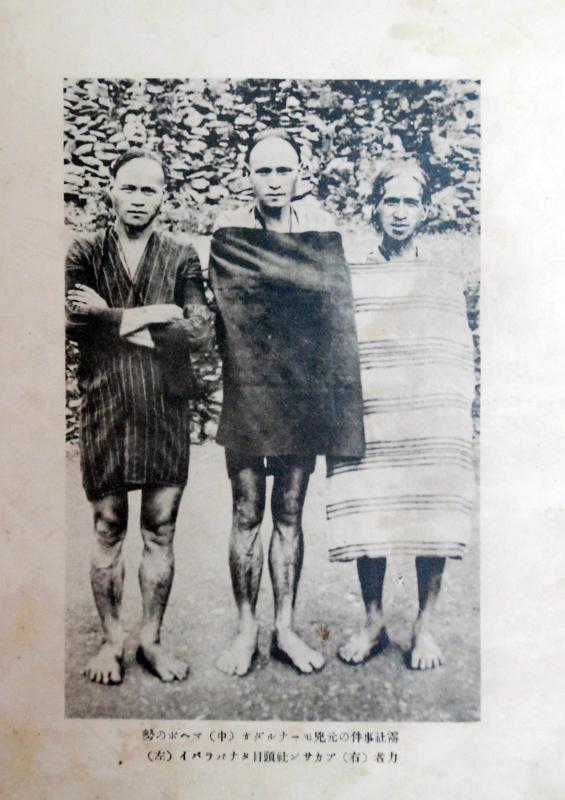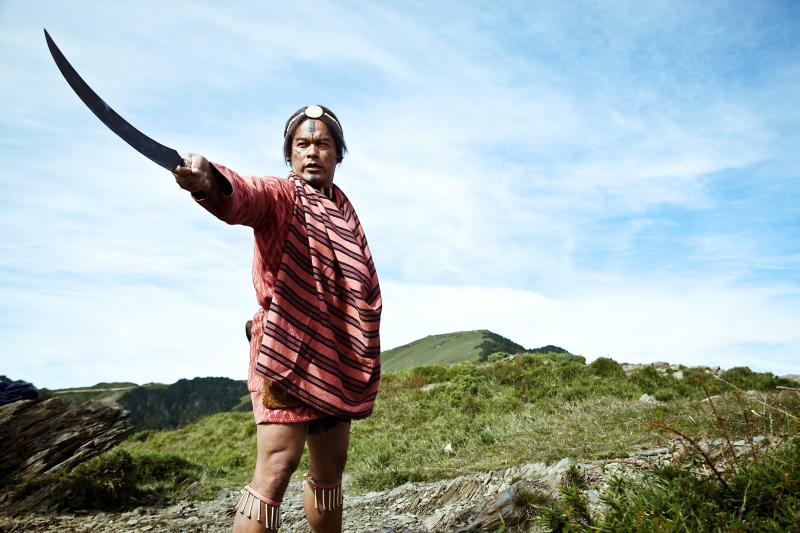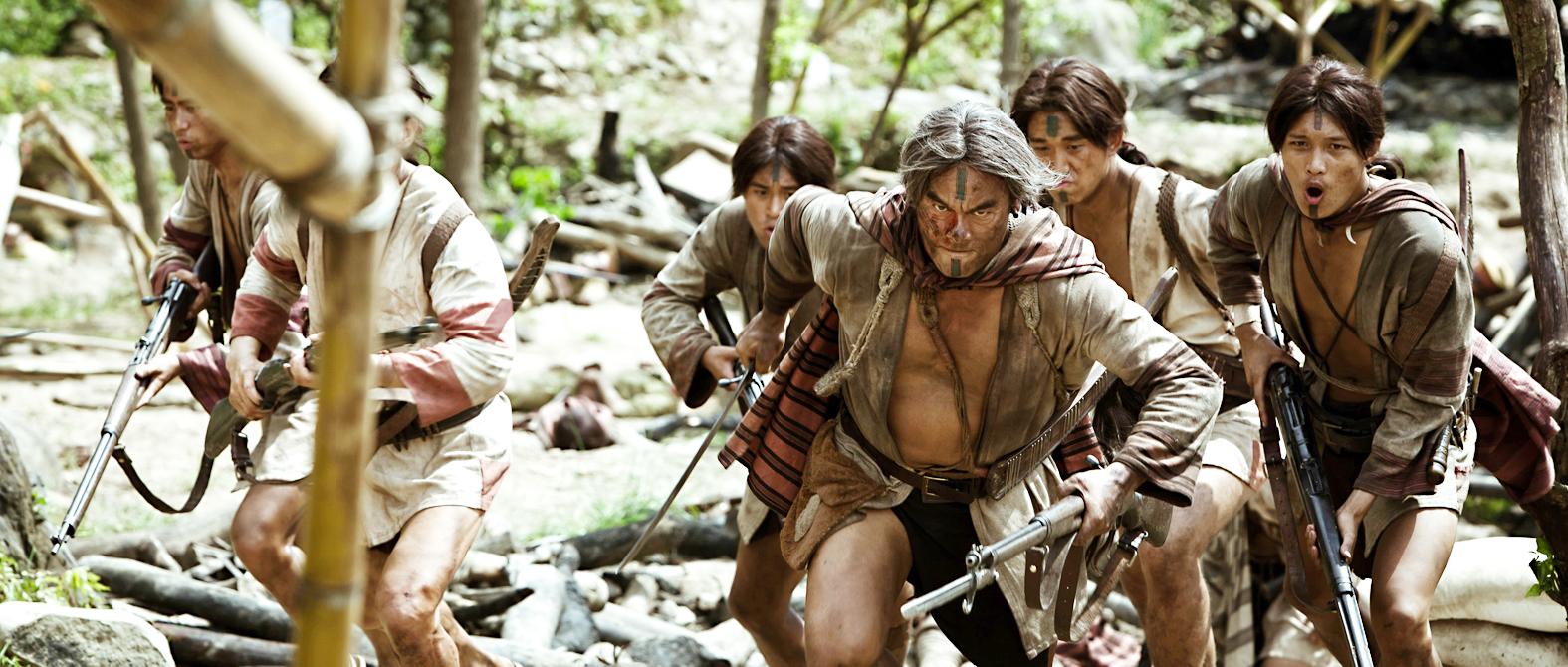One of the most common — and most pointless — questions pollsters ask Taiwanese is whether they will fight against a Chinese invasion. Current polling, taken against the background of Russian President Vladimir Putin’s invasion of Ukraine, shows the number of people saying they would fight is rising.
For example, a recent poll by the International Strategic Study Society (台灣國際戰略學會) saw the count of those willing to fight against a Chinese invasion rising to 70 percent, against its poll number of 40.3 percent in December last year.
This is as one would expect. If the invasion of Ukraine ends and something like peace takes hold again, these numbers might well fall as the memory of Ukraine’s incredible bravery recedes.

Photo: Chen Feng-li, Liberty Times
Pollmongering on this issue is complicated by the simple fact that the international media loves to report that Taiwanese won’t fight, skewing perceptions. A widely-shared 2011 AP piece reported that Taiwanese youth were losing their appetite for fighting China, citing a Commonwealth Magazine poll of teenagers 12-17 (!) that did not even mention China. Pieces showing that Taiwanese youth don’t want to fight, with quotes from young people that military service is a waste of their time, appear regularly in the foreign media.
Fortunately, the Taiwanese response to Ukraine is starting to move media workers off this longtime trope. Perhaps someday those in the media might be able to look at China and see, not a nation-state, but an endless parade of Ukraines whose cultures are slowly being destroyed by the Chinese Communist Party’s imperial constructs of “Chineseness,” just as Putin claims Ukrainians are “Russians.”
The international media sometimes correctly contextualizes Taiwanese attitudes toward the military by referring to the widely hated Martial Law era military service. However, foreign media workers almost never contextualize potential Taiwanese resistance by locating it in the island’s long history of revolts and rebellions, settler violence and indigenous resistance.

Photo courtesy of ARS Film Productions
Because Taiwanese do not openly and self-consciously see themselves as occupiers of what was once a frontier state, visitors here are never treated to the kind of tourist experience that is normal in, say, the American West. Nor is the frontier experience an obvious part of Taiwanese masculinity and socialization, unlike the cowboy mythology of Americans.
For example, while there are numerous fortifications and other infrastructure left from the Dutch, Manchu (Qing Dynasty) and Japanese colonization periods, few presentations forthrightly situate their relics as objects of colonial expansion and sites of indigenous resistance and settler violence. Hence, the violence that has colored Taiwanese history as a frontier state largely disappears from media narratives about Taiwan.
Travelers across North and South America, by contrast, experience centuries of European colonialism that is self-consciously presenting what mainstream society knows to be imperial and colonial conquest. Consider a site like Fort Michilimackinac in the state of Michigan, where there are re-enactments and presentations showing the fort’s role in the conquest of the region. There’s even a nifty YouTube video of a re-enactment of the Ojibwe attack on the fort in 1763 (they took and occupied it for a year).

Photo courtesy of ARS Film Productions
Similarly, the second sentence on the US National Park service Web site for Fort Laramie in Wyoming observes that the fort “witnessed the entire sweeping saga of America’s western expansion and Indian resistance to encroachment on their territories.”
What kind of frontier society did Taiwan have? One that will be familiar to North and South Americans. John Shepard, in Murray Rubenstein’s Taiwan: A New History, described it thusly: “The prohibition on the immigration of wives and families led to the growth of a volatile, bachelor-dominated society in Taiwan that was prone to brawling and rebellion.”
In the 18th century alone, which opened with the massive revolt of Chu Yi-kuei (朱一貴) in 1721 that saw Qing officialdom almost swept off the island, and closed with the epic Lin Shuang-wen (林爽文) revolt of 1787-88, there were revolts roughly every eight years. By the 19th century, the interval had fallen to roughly every third year, according to a piece by Hsu Wen-hsiung (許文雄) on social organization during the Qing in Ronald Knapp’s China’s Island Frontier. Much Qing administrative energy was spent coping with the island’s rebelliousness.
Further, conflict between Hakkas and Hoklo settlers was endemic, with groups raiding each other’s temples and stockpiling weapons up to and including cannon. Different Hoklo groups also fought each other. Even today, though many famous temples were involved, doubling as fortresses and military bases, it is difficult to find this interesting and exciting history on the English Web sites and presentations of major temples in Taiwan.
For example, Longshan Temple in Taipei’s Wanhua District (萬華), built in 1740, functioned as the military headquarters of conflicts between various local groups for nearly 150 years, yet that is not mentioned on either the Tourism Bureau or the temple’s own English Web sites. Surely the occasional visitor must wonder why the Guan Gong (關公), the god of war and martial arts, occupies a space in the rear hall.
The terrible record of the violent, unremitting resistance of Taiwan’s indigenous people to Han Chinese settlement and outside colonizers is finally coming to the public consciousness with the appearance of the 1930 Wushe Incident (霧社事件) and the 1867 Rover Incident (羅妹號事件) in film and on TV in recent years. The peoples of the plains and mountains were also famed for their revolts against the Manchus.
For all its violence, let us also recall that Taiwanese frontier society was also organized along the lines of mutual self-help, at least among the Han Chinese. Taiwan was famous for its sworn brotherhoods and bands of bravos, who fought with each other. It is less known that among the local settlers it was common for people on the road to lodge at individual homes on the way. Hsu observed that “As late as 1894, a Japanese visitor still saw very few hostels on the island because travelers generally could lodge with friends.”
This tradition of mutual support, especially in times of trouble, should give any invader pause. Remember how the young flooded the south to help after the horrors of Typhoon Morakot in 2009? They will also flock to help if Taiwan is attacked.
The Japanese period was no different. Both Han Taiwanese and aboriginal revolts, along with other forms of organized social resistance to the colonizer, were common. When the Chinese Nationalist Party (KMT) arrived, they were greeted by all sorts of resistance, culminating in the 228 Incident.
Indeed, it might be more profitable to view the current era in Taiwan as a mere interlude between periods of fierce resistance, a little bubble of apparent, transient peace.
For the government, revisiting this deeper history beyond the Martial Law period might help build local identities and reinforce the will to resist. Imagine how much interest and conversation about the island’s history a re-enactment of the Chu Yi-kuei rebellion or other major revolt would engender (along with tourism dollars!). Imagine if the government in its communication with the outside consciously re-situated Taiwan and its peoples as longtime resisters against outside colonizers.
In the next few months the media is going to be filled with much commentary on what Taiwan can learn from Putin’s invasion. Taiwanese, looking at Ukraine, will learn many things, of course.
Ukrainian President Volodymyr Zelensky teaches us that resistance is both possible and necessary, but also that it should be proudly situated deep in Taiwan’s long history of resistance.
Slava Ukraini!
Notes from Central Taiwan is a column written by long-term resident Michael Turton, who provides incisive commentary informed by three decades of living in and writing about his adoptive country. The views expressed here are his own.

Three big changes have transformed the landscape of Taiwan’s local patronage factions: Increasing Democratic Progressive Party (DPP) involvement, rising new factions and the Chinese Nationalist Party’s (KMT) significantly weakened control. GREEN FACTIONS It is said that “south of the Zhuoshui River (濁水溪), there is no blue-green divide,” meaning that from Yunlin County south there is no difference between KMT and DPP politicians. This is not always true, but there is more than a grain of truth to it. Traditionally, DPP factions are viewed as national entities, with their primary function to secure plum positions in the party and government. This is not unusual

More than 75 years after the publication of Nineteen Eighty-Four, the Orwellian phrase “Big Brother is watching you” has become so familiar to most of the Taiwanese public that even those who haven’t read the novel recognize it. That phrase has now been given a new look by amateur translator Tsiu Ing-sing (周盈成), who recently completed the first full Taiwanese translation of George Orwell’s dystopian classic. Tsiu — who completed the nearly 160,000-word project in his spare time over four years — said his goal was to “prove it possible” that foreign literature could be rendered in Taiwanese. The translation is part of

The other day, a friend decided to playfully name our individual roles within the group: planner, emotional support, and so on. I was the fault-finder — or, as she put it, “the grumpy teenager” — who points out problems, but doesn’t suggest alternatives. She was only kidding around, but she struck at an insecurity I have: that I’m unacceptably, intolerably negative. My first instinct is to stress-test ideas for potential flaws. This critical tendency serves me well professionally, and feels true to who I am. If I don’t enjoy a film, for example, I don’t swallow my opinion. But I sometimes worry

US President Donald Trump’s bid to take back control of the Panama Canal has put his counterpart Jose Raul Mulino in a difficult position and revived fears in the Central American country that US military bases will return. After Trump vowed to reclaim the interoceanic waterway from Chinese influence, US Defense Secretary Pete Hegseth signed an agreement with the Mulino administration last week for the US to deploy troops in areas adjacent to the canal. For more than two decades, after handing over control of the strategically vital waterway to Panama in 1999 and dismantling the bases that protected it, Washington has